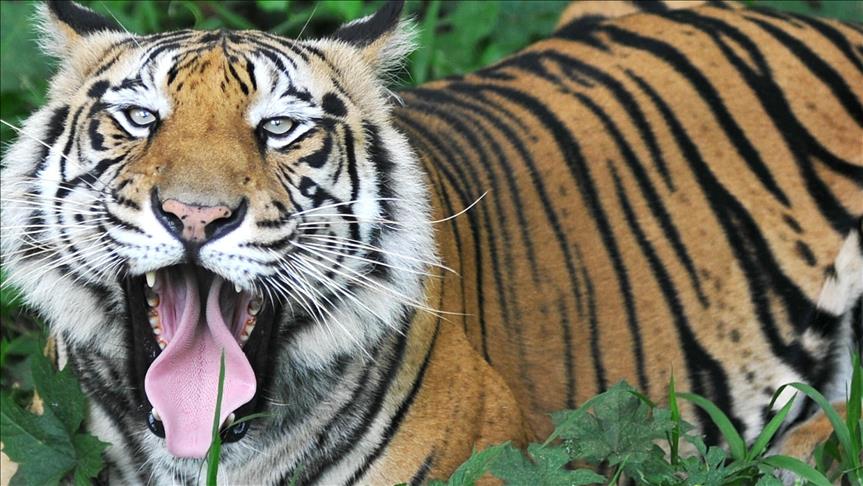Cambodia approves plan to reintroduce tigers
Plan to bring in first tigers from India dependent on factors such as illegal logging, habitat loss, sufficient prey numbers and funding.

Phnum Penh
By Lauren Crothers
PHNOM PENH, Cambodia
Government officials have approved a plan to reintroduce tigers to Cambodia’s Eastern Plains by 2022, meaning the country could become the first to regain a population of the species after functional extinction.
The World Wildlife Fund’s (WWF) Cambodia headquarters revealed Wednesday that the Cambodia Tiger Action Plan -- part of a global plan to try and double wild tiger numbers between now and then -- was approved March 23.
The initiative’s execution, however, is now dependent on a number of factors, such as illegal logging and habitat loss, sufficient prey numbers and funding.
Tigers have been considered functionally extinct in Cambodia since the last sighting, which was in 2007.
That tiger was pictured on a camera trap set up in the Mondolkiri Protected Forest area, in the east of the country.
In a press conference Wednesday, WWF country director Chhith Sam Ath acknowledged the obstacles that must be overcome for the plan to be successful.
“One of the major concerns is law enforcement, which needs to be strengthened in those areas first, as well as the wildlife trade and illegal logging,” he said.
“We need to ensure that there is zero poaching and habitat loss. We need a world-class protected area where there is no poaching, hunting, or forest logging.”
According to a WWF fact sheet, law enforcement in Mondolkiri Protected Forest must be enhanced if potential tiger densities are to be achieved.
“Currently there are 0.5 rangers per 100 kilometres squared. Published guidelines recommend at least 3.0 per 100 kilometre squared,” it says.
Sam Ath said a WWF survey of people living in the region found that 80 percent were happy with the idea of reintroduction, and that one tiger is capable of bringing in $15 million in ecotourism revenue.
On April 1, Global Forest Watch (GFW) released new research that said 90 percent of tigers’ habitats around the world have been destroyed by “agriculture, logging and infrastructure expansion,” with an estimated 3,500 left in the wild.
In September last year, GFW also found that deforestation had accelerated at a higher rate in Cambodia than anywhere else in the world between 2011 and 2014, while the country lost “four times the area of tree cover in 2014 as it did in 2001.”
Keo Omaliss, director of the forestry administration’s department of wildlife, said the government does not have the budget to cover the cost of implementing the plan, which he estimated could cost between $12 million and $15 million.
He said authorities had “already started the monitoring and research on tiger prey” which includes animals such as banteng -- a Southeast Asian type of cattle -- and the deer-like sambar and Red muntjac.
“Normally, we would bring two males and five to six females [tigers] in the initial stage,” he said.
Omaliss said that given the male tiger habitat range of approximately 100 square kilometers (38.6 square miles), with another few females added to the mix, “we would need around 2,000 square kilometers” in which the big cats could roam safely.
A delegation is set to travel to India next week to attend a ministerial meeting on the reintroduction of tigers, and the government expects to finalize a so-called “sourcing agreement” with the Indian authorities next year for the procurement of some of the tigers.
Wildlife Alliance founder Suwanna Gauntlett said Wednesday that forest rangers frequently patrol the prospective tiger reintroduction areas in the Eastern Plains, as well as the Cardamom Mountains in the west, catching “smugglers as they leave the forest areas with the animals.”
In an interview with the Phnom Penh Post in February, after four people were arrested for illegally transporting four pythons and around 50 tortoises in central Kompong Chhnang province, Gauntlett was quoted as saying that illegal wildlife trade in Cambodia was “only getting worse.”
Anadolu Agency website contains only a portion of the news stories offered to subscribers in the AA News Broadcasting System (HAS), and in summarized form. Please contact us for subscription options.



